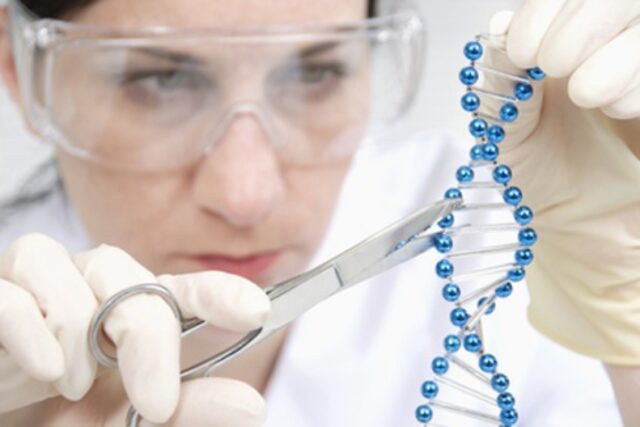A little oversight is enough: a small scratch when gardening or a cut when shaving. What is completely harmless to most people can be life threatening for hemophilia patients. Due to a genetic defect, your blood does not clot and therefore a wound can bleed for hours. To avoid this, the roughly 320,000 hemophiliacs around the world must regularly inject coagulation factor VIII (FVIII), a protein that their liver cannot produce on its own.
Hemophilia A is a monogenic disease, which means that only one gene – in this case, a well-studied gene – is defective. This makes inherited diseases an ideal candidate for gene therapy. “The basic concept of this therapy is based on a simple fact: an absent or defective gene means that a protein with a specific function in the body is also missing,” says Professor Hildegard Buening, biologist and deputy director of the Institute of Experimental Hematology of the Hannover Faculty of Medicine (Germany). “Therefore, in gene therapy, we introduce a working copy of the defective gene into the cell to take over its function.”
Instead of repeated injections of clotting factor to hemophilia patients throughout their lives, the Bayer researchers want to use a gene for the liver to produce FVIII to ensure normal blood clotting function in the body. “We are using genetic enhancement to bring the production of this protein into the patient’s body at the same level that it is produced in healthy people,” says Dr. Frank Reetz, program manager for Bayer’s Pharmaceutical Division. Researchers now believe that this can make up for FVIII deficiency for many years.
A “taxi” takes the gene to the defective cell
To ensure that the gene reaches its defined target in the liver, a means of transport is needed. “The transport is carried out by means of the so-called vectors or gene transport. I like to call them taxis,” says Professor Buening. These “taxis” are actually engineered viruses, for example. In this case, they are based on the so-called adeno-associated viruses (AAV).
When the taxi gets close to its target, it comes into contact with the receptors on the cell membrane. ‘We can observe this process in the laboratory using techniques developed for it,’ reports Professor Buening: ‘It’s like knocking on a door. If everything fits together, the vectors enter the cell and are transported within the endosomes, small intracellular vesicles, towards the cell nucleus. ‘ Therapeutically relevant genetic information is entered there.
Really get to the root of disease

Our approach looks very promising,” says Dr. Reetz. “Phase I / II clinical trials are currently underway in hemophilia A patients.” “For the Bayer researcher, these are» truly transformative therapies «. Gene therapy, he says, allows us to get to the root of diseases and achieve a cure or regeneration. According to Professor Buening, AAV vector therapies have the greatest potential in organs where there is little or no division, such as muscles, liver, brain and eyes, but also in the cardiovascular system: ‘They are often rare diseases for which we have no way of helping people with conventional medicine.
Oncology
To date, seven gene therapies have been approved in Europe, for example, for use in a form of immunodeficiency, in a congenital form of blindness, and in inherited muscle atrophy. For more than a year, untreated patients can be treated with so-called CAR-T cell therapies against aggressive forms of blood cancer. The biologist sees other areas of application in oncology: “Here too there are changes, a defect that allows the cancer cell to proliferate.” With the help of a vector, cells of the immune system can learn to recognize tumor cells. “There are many other therapies in development,” says Buening. “We hope to see many approvals in the next decade!”

